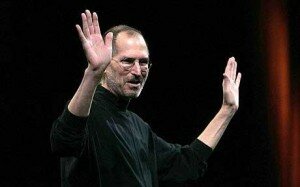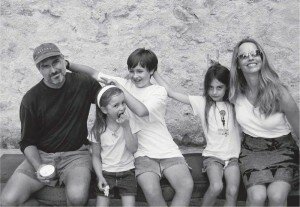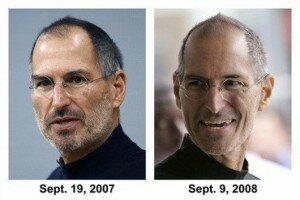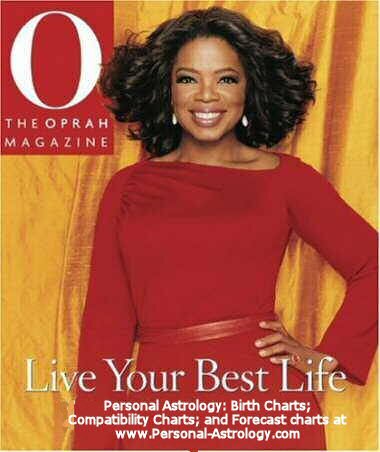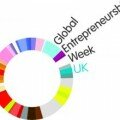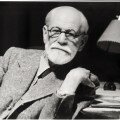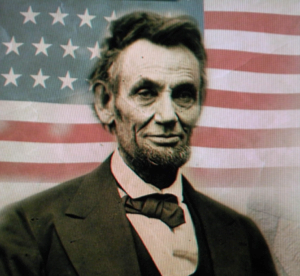Steve Jobs: Biography
Steven Paul Jobs was born February 24, 1955 in San Francisco, California. Soon after his birth to Joanne Schieble and Abdulfattah “John” Jandali, two university graduate students, Steve was given up for adoption and soon adopted by Clara and Paul Jobs after they promised to his biological parents to put him through college.
Steve was named after his new parents, Jobs and lived with them in Mountain View within California’s Silicon Valley. Silicon Valley was later to become the world’s biggest tech hub, with a little help from Steve and his teenage friends.
During his time as a youngster, Steve worked on electronics with his father, Paul, in the family garage. Paul would show Steve how to take apart and reconstruct electronics, instilling from an early age a long lasting excitement, confidence and capability in Jobs; sure to of influenced his future in design and electronics.
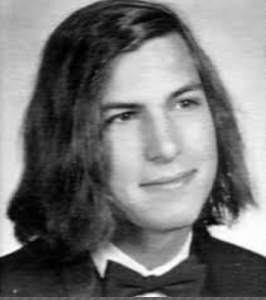 In 1971 Jobs enrolled at Homestead High School and was introduced to his future partner in world changing, Steve Wozniak (who was currently attending the University of Michigan at the time), through a friend of Wozniak’s.
In 1971 Jobs enrolled at Homestead High School and was introduced to his future partner in world changing, Steve Wozniak (who was currently attending the University of Michigan at the time), through a friend of Wozniak’s.
In an interview with ABC News in 2007, Wozniak spoke about his connection with Jobs saying: “We both loved electronics and the way we used to hook up digital chips. Very few people, especially back then had any idea what chips were, how they worked and what they could do. I had designed many computers so I was way ahead of him in electronics and computer design, but we still had common interests. We both had pretty much sort of an independent attitude about things in the world …”
After high school, as promised between Steve’s parents and biological parents at the time of adoption, Jobs enrolled at Reed College in Portland, Oregon. But before long, after felling a lack of direction and realising the costs he was incurring his parents by studying at the college, Steve dropped out.
He’d only been at the college for 6 months, but decided instead to spend the following 18 months unofficially dropping in on creative classes instead. His most memorable drop in was a calligraphy class which later aided in him the introduction of multi-face typography’s in the Mac (the first computer to integrate them).
In 1974, Steve periodically went to Atari and took a position as a video game designer, but later left just a few months later to find spiritual enlightenment in India. He travelled the continent, seeked spiritual enlightenment and experimented with psychedelic drugs.
The Beginning of Apple Computers
In 1976, after returning to California, Jobs (now 21) and Wozniak started Apple Computers in the Jobs family garage, funding their venture by selling Job’s Volkswagen bus and Wozniak’s beloved scientific calculator.
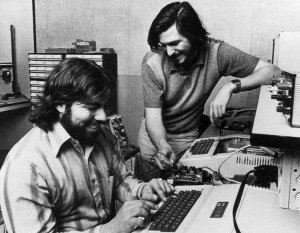 In the years to follow, Jobs and Wozniak were to create several machines now credited for revolutionizing the computer industry by being smaller, cheap, simpler and more accessible then previous generation of computers. The Apple I was initially marketed for $666.66 each and earned the corporation around $744,000 with some success. But the real success of these first few years was yet to come, and was seen after the release of the Apple II.
In the years to follow, Jobs and Wozniak were to create several machines now credited for revolutionizing the computer industry by being smaller, cheap, simpler and more accessible then previous generation of computers. The Apple I was initially marketed for $666.66 each and earned the corporation around $744,000 with some success. But the real success of these first few years was yet to come, and was seen after the release of the Apple II.
The Apple II was released 3 years following the Apple I and with it Apples sales increased 700% to $139 million. Apple Computer became a publicly traded company in 1980 and gained a market value of $1.2 billion on its very first day of trading. It now needed a president and Jobs looked to marketing expert Jon Sculley of Pepsi-Cola to help fill the role, famously saying in a meeting of theirs “Do you want to sell sugar water for the rest of your life, or do you want to come with me and change the world?”
Steve’s Departure from Apple

All seemed to being going well at Apple, however the next few products from Apple incurred significant design flaws resulting in recalls and customer disappointment. In 1984, Apple released the Macintosh but despite generally good sales, the computer was still not IBM compatible. Scully felt Jobs was hurting the company and executives began to want him out.
As a result, Jobs was to resign from his role at Apple in 1985 and after sometime of regret and misery he realised his dreams once more and began a new hardware and software company named NeXT, Inc. Following the creation of NeXT, Jobs also brought the animation company George Lucas, which was later to become Pixar Animation Studios.
With an initial investment of $50 million of his own money, Steve had began what was to become the most successful animation studio in history, producing films such as toy Story, Finding Nemo and The Incredibles. Pixar merged with Walt Disney in 2006, making Jobs Disney’s largest shareholder.
Steve’s Return to Apple
Pixar had become a great success with Steve at the helm, but NeXT not so much. It had failed in its attempts to sell its specialized operating system to the American Public and thus in 1997, an also failing Apple brought the company for $429 million in an attempted to get Steve back on board.
Once back, Steve got straight back to work addressing Apples issues and revitalising the company he loved. He brought in management, altered stock and imposed an annual salary of just $1 a year on himself. And with his new, beautiful and ingenious products such as the iMac and later to be iPod, iPhone and iPad, and their effective branding campaigns and stylish designs, he once again got Apple back on track.
Steve’s Battles with Pancreatic Cancer
In 2003, Jobs discovered he had a neuroendocrine tumour, a rare but operable form of pancreatic cancer. But instead of immediately opting for the surgery, which would have rid him of his cancer, he instead chose to alter his vegetarian diet. For nine months, Jobs postponed the surgery, making Apples board of directors very nervous, as they feared the collapse of Apple stocks if word got out about the CEO’s bad health. In 2004, he had the surgery to remove the tumour.
Later Innovations of Apple
We all know of them, if not use them! Apple has released some amazing and ingenious inventions this century and has caused a revolution in technology. Products such as the MacBook Air, iPod, iPhone and iPad have all dictated the evolution of technology.
In 2007, with its quarterly reports improving significantly, Apple was back up at the top. The company boasted a staggering $1.58 billion dollar profit, an $18 Billion dollar surplus reserve in the bank and zero debt. Its stocks had also now reached a record breaking level of £199.99 a share.
In the year to follow of 2008, iTunes became the second biggest music retailer (following first place of Wal-Mart) in the US. Selling 200 million iPods and six billion sing downloads on iTunes, half of all of Apples revenue comes from iTunes and iPod sales.
Personal & Family Life
Throughout his life, Steve has been a fairly private man who rarely disclosed information about his family.
At the age of 23, Jobs fathered his first daughter with his girlfriend at the time, Chrisann Brennan, but denied paternity of this daughter (named Lisa Brennan-Jobs) in court, claiming he was sterile. This is believed to have been due to his lack of matureness, intense focus on his work at Apple and his experiences of being left by his own parents as a child.
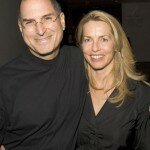
Jobs did not have any relationship with his daughter until she was 7, however he later confessed and she came to live with him as a teenager.
In the early 1990’s Jobs met Laurene Powell at Stanford business school, where Powell was an MBA student. They instantly got on and married on March 18th 1991, living together in Palo Alto, California. They went on to have three children named Erin Siena, Eve and Reed Jobs.
Final Years
In 2009, reports and rumours circulated the globe about Jobs’ weight loss, and some predicted his health issues had returned. Jobs responded to the reports by stating he was dealing with a hormone imbalance. But after nearly a year away from the spotlight, Jobs decided to host a keynote address at an Apple invite-only event on September 9, 2009.
On August 24, 2011, Steve jobs finally stepped down as CEO of Apple and put Tim Cook in replace. And just a few weeks later on October 5th 2011, Apple Inc. announced its co-founder had passed away. Following a decade long battle with pancreatic cancer, Steve Jobs died in Palo Alto surrounded by his family. He was just 56 years old.
News of his death was first announced and present by Apple via their website, but was soon to be shot around the global via social media and world news programs. Below is a tribute video which was posted following his death and includes so of the various scenes following his death.
Steve Jobs Life Lessons
What Can We Learn from Steve Jobs
Life Lesson 1: He Loved What He Did
Steve loved what he did. He loved technology, he loved enterprise, he loved Apple and he loved changing the world. To Steve, these things we’re his life and it’s his love for them that I believe drove him to success in them.
Your work is going to fill a large part of your life, and the only way to be truly satisfied is to do what you believe is great work. And the only way to do great work is to love what you do. If you haven’t found it yet, keep looking. Don’t settle. As with all matters of the heart, you’ll know when you find it. – Steve Jobs
After being kicked from Apple in 1985 Steve was upset, but none the less determined to move on to his next thing. He moved on to create NeXT, another computer based company and Pixar the animation studio. He loved what he did and didn’t give up on it, creating and building more companies in the technology sector and going on to influence the world even more. Without this love and devotion for his sector Steve may have got lost at this time and never gone on to accomplish the rest of what he did.
Life Lesson 2: He Didn’t Tolerate Bezos
Many will know of Steve and his bluntness, and some will agree with it while others won’t. But there is no disagreement that it was this lack of tolerance for rubbish and ‘Bezos’ that brought Apple and his other companies to their positions today.
He wouldn’t tolerate bad people and he wouldn’t tolerate bad working results, he’d except only the best. If something was rubbish, he’d tell them it was rubbish, if something was good but need improvements, he’d tell them so, but he would demand the best. And he’d demand what he expected, and except no lower.
For most things in life, the range between best and average is 30% or so. The best airplane flight, the best meal, they may be 30% better than your average one. What I saw with Woz was somebody who was fifty times better than the average engineer. He could have meetings in his head. The Mac team was an attempt to build a whole team like that, A players. People said they wouldn’t get along, they’d hate working with each other. But I realized that A players like to work with A players, they just didn’t like working with C players. — Steve Jobs
Life Lesson 3: Get Varied Experiences
Steve was an innovative guy. He innovated all of the time, whether it be in hardware, software, or even at home, he would innovate and improve. But innovation and the ability to innovate well comes from experience.
“Creativity is just connecting things.” He once said, “When you ask creative people how they did something, they feel a little guilty because they didn’t really do it, they just saw something. It seemed obvious to them after a while. That’s because they were able to connect experiences they’ve had and synthesize new things.”
Steve had many experiences in his life, he travelled to India where he learned about culture and social differences; he experimented with drugs and LSD in high school; he dropped in to a variety of classes such as calligraphy at college, which was later to be used in the Macintosh; he took on work experience as a teenager at the computer chip company in Palo Alto; he had extreme beliefs in Buddhism; and he worked on many projects during high school with Wozniak, further developing his experience.
Steve said at a conference at the Academy of Achievement many years ago about how innovation comes only from experience and so to be innovative you must have a different set of experiences from everyone else. I believe it was the experiences I listed above that all came together with the other parts of his life, to aid him in his innovations at Apple and to create the best company in the world.
Further Reading: Steve Jobs – How to Be Intelligent
Life Lesson 4: Feeling Means as Much as Fact
With Apple, the feel means as much as the fact. People not only buy Apple products for the fact of their great performance and capability, but also for the feel of the products. The feel of holding one, using one and the pride of simply carrying one.
Apple is all about culture and feel, more so then any other company in the world and it’s come from Steve. He would demand and get perfection in every area of the business, working tirelessly with designer John Ive to get simplicity and greatness into everything.
Simple can be harder than complex: You have to work hard to get your thinking clean to make it simple. But it’s worth it in the end because once you get there, you can move mountains. - Steve Jobs
And that’s what they’d do. They’d work on the design and feel of the products themselves, the design of the packaging, the presentation of the products on the website and the way they we’re put across during the conferences. And it’s only this dedication to simplistic and perfection from Steve that has gained Apple the culture, feel, image and reputation that it has today.
A video by Jonny Ive, from his speech at Apples Remberance event following Steve’s death can be found below, where Jonny speaks about Steve and his dedication to the products, the brand and its design.
Life Lesson 5: Don’t Mess with Your Health
In 2003 Steve developed pancreatic cancer. Doctors found it to be a rare but operable form of cancer. Although an operation to cure the cancer was available, Steve being Steve took it on himself to cure the cancer by himself through a Zen diet, and declined the operations needed. He did so due to his beliefs in Zen Buddhism and the animal extracts that would be needed for the medication in and following his operation.
He was unable to cure the cancer by himself and in turn had to take the operation later that year. But by now, towards the end of 2003, the cancer had grown and although successful, the operation was unable to fully cure him from the cancer.
In 2009 Steve had severe weight loss and found himself back in illness. He passed it off for a while but soon stood down from CEO of Apple on August 24th 2011 and died just a few weeks later surrounded by his family on October 5th 2011.
The lesson to be learned here is two-fold. First to appreciate your health and never mess around with it like Steve did, and second to do all that you can while you still have it, to put your footprints on the world and to influence the areas of it that you love.
A Conclusion from Steve Himself
“Remembering that I’ll be dead soon is the most important tool I’ve ever encountered to help me make the big choices in life. Almost everything–all external expectations, all pride, all fear of embarrassment or failure–these things just fall away in the face of death, leaving only what is truly important.
Remembering that you are going to die is the best way I know to avoid the trap of thinking you have something to lose. You are already naked. There is no reason not to follow your heart.
No one wants to die. Even people who want to go to heaven don’t want to die to get there. And yet death is the destination we all share. No one has ever escaped it. And that is as it should be, because Death is very likely the single best invention of Life. It is Life’s change agent. It clears out the old to make way for the new. Right now the new is you, but someday not too long from now, you will gradually become the old and be cleared away. Sorry to be so dramatic, but it is quite true.”
Related Reading:
Life Lessons from Steve Jobs – Quotes
Steve Jobs: Secrets of Life (Video Interview)
Six Ways to Succeed like Steve Jobs

